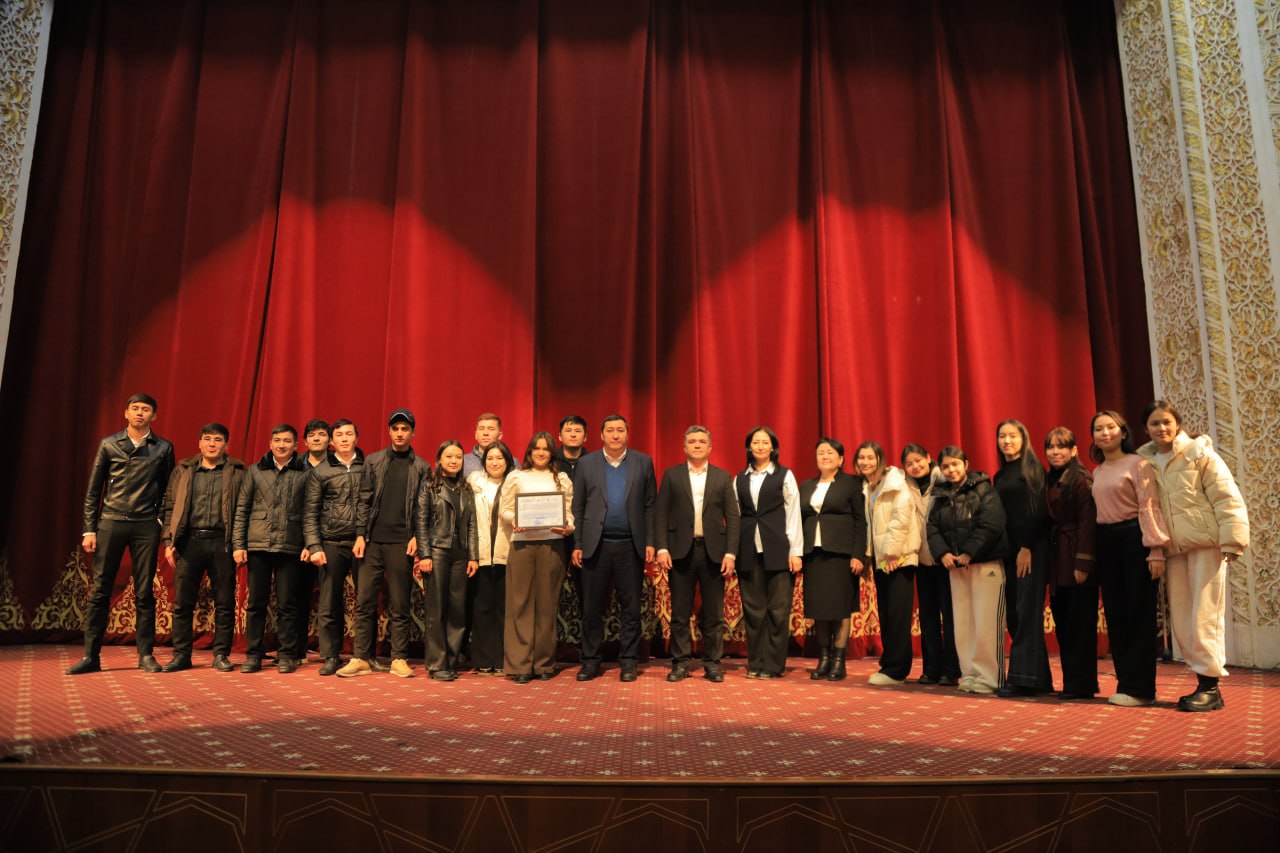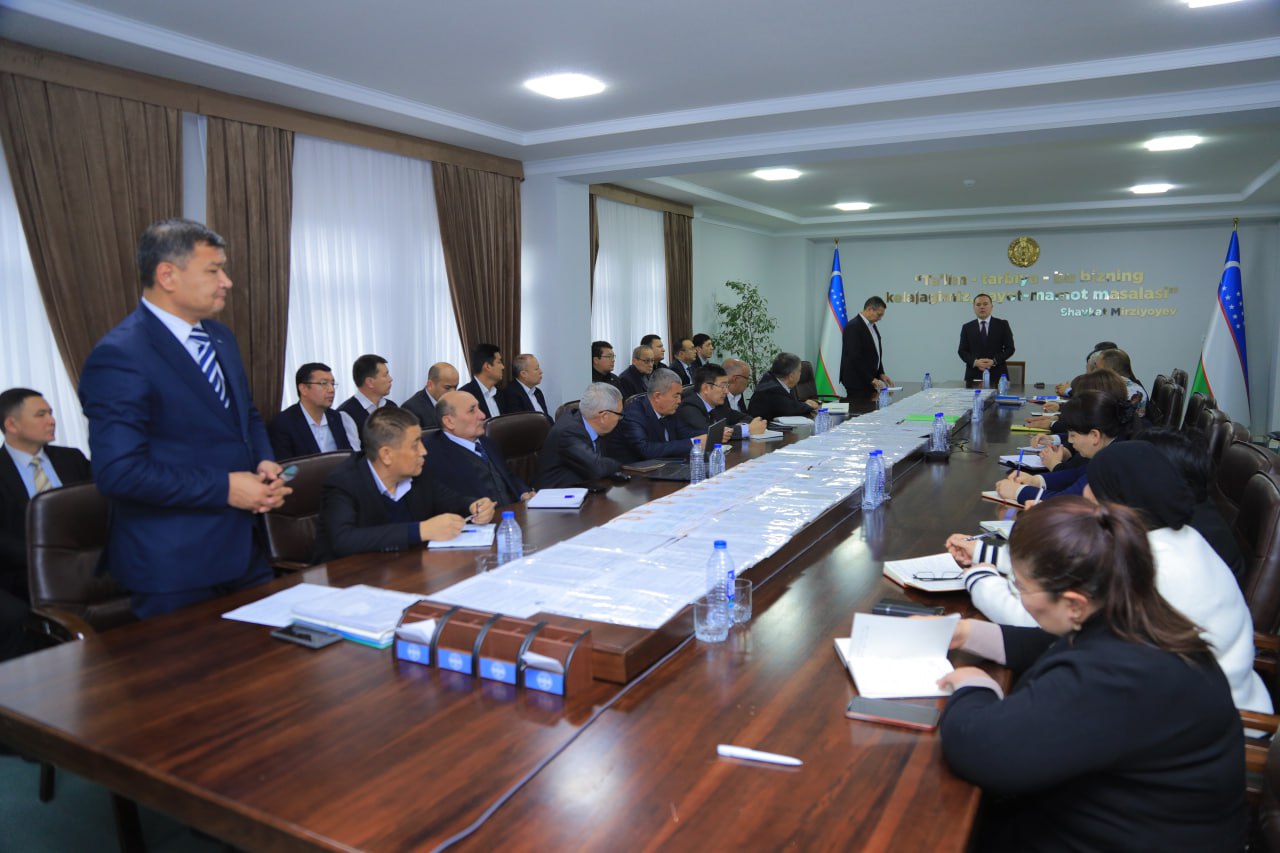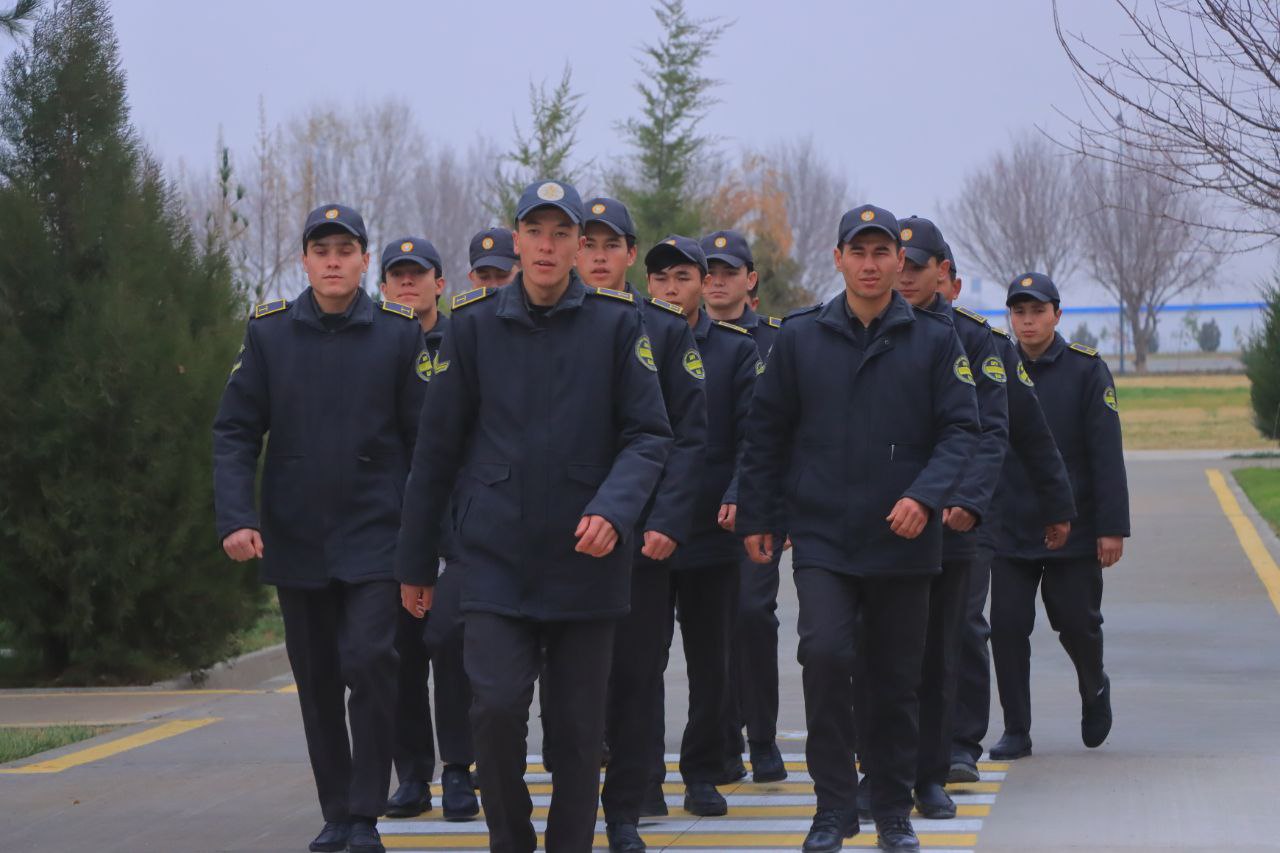Quvondikov A.T JizDPI
Theory of Physical Culture and
Teacher of the Department of Methodology
Аннотация: Мақолада умумий ўрта таълимда бошланғич синф ўқувчилари жисмоний тарбиясини шакили ва мазмуни ахамияти хақидаги илмий назарий маълумотлар маълум даражада ёритилган.
Annotation: The article provides some scientific and theoretical information on the importance of the form and content of physical education of primary school pupils in general secondary education.
Аннотация: В статье приведены научно-теоретические сведения о важности формы и содержания физического воспитания младших школьников в общем среднем образовании.
Keywords: Students, physical education, physical education minutes, pre-class gymnastics, sports entertainment, sports sections, holidays, competitions, fun and ingenuity, health day.
Life forms and classes for boys and girls, school classes, school classes, extracurricular institutions and forms of family placement: “Physical education classes”, ” lessons “. “Physical training”, “Games with a big break”, “Sports entertainment (for performance)”, “Physical education in extended day schools”, “Sports sections”, “Holidays, competitions”, “cheerful and clever” meetings, “health day”, etc. More than a dozen are organized in the form of extracurricular activities.
Physical education in out-of-school institutions: Children and adolescents are organized in the form of sports schools, sports facilities, swimming pools, parks, houses of culture, sports sections under the palaces of culture, physical education clubs, children’s sports sections organized by community gatherings and others. Primary school students of general secondary education are divided into sports clubs organized at the school depending on their physical abilities, and regularly trained by specialists for different ages training forms of culture are conducted.
Physical education in the family is organized at home, in the form of physical minutes during the preparation of lessons, homework from physical education, sports exercises, family trips and independent exercise, games, training. Form and content of extracurricular activities in physical culture: Extracurricular activities, sports and fitness activities are called extracurricular activities.
The main goals and objectives of extracurricular activities are to cultivate and develop the desire for a healthy lifestyle, to form a desire to have a decent family. Extracurricular educational activities are based on the interests, wishes and desires of stu dents to complement the educational process in their spare time. Forms of extracurricular physical education provide an opportunity to increase students’ creative abilities and initiative. The peculiarity of extracurricular activities is that the circle, the club, the diversity of programs, the innovations in them create new opportunities for the formation of students as individuals.
The organization of mutual learning and learning will make the knowledge acquired by students a daily habit when physical education classes become a necessity even in extracurricular situations. Most importantly, these sessions and activities are organized on a voluntary basis based on the wishes of the students, depending on their interests, and management is handed over to them. The main part of physical fitness training lifestyle is aimed at ensuring the health of the nation. It is important to remember that regular participation of students in sports sections, competitions, which they like, is the first purposeful step towards the highest levels of sports.
The quality of extracurricular and out-of-school physical education and sports activities is children and adolescent sports This will determine the future of sports in the country. Another aspect of extracurricular physical education activities is the organization of a system of cooperation between school, family and community organizations. In this area, it is necessary to give a wide place to the sports festival “healthy, strong”, the game “cheerful starts”, the hopes of students.
The interaction of educators, families, students and parents is an important tool for introducing physical education, a healthy lifestyle into the daily lives of young people, which further improves the quality of work.
Extracurricular activities
- Early morning education: installation in a ventilated room after waking up in the morning, intended for home installation on the day of khar. Morning physical education, set up with a children’s school on a small plot of land, will be a 5-6 exercise religion. In the upper grades, there will be Islam from 8-10 classes. Exercise in the morning, mash is given to different parts of the body. Each mash is crushed 6-8 times. Running exercises give 30-40 seconds. the main emphasis should be on breath control.
- Pre-class gymnastics exercises. Its purpose; to warn students of the ability to work mentally and the learning activities ahead of them, as well as negative shifts from body parts, to eliminate the situation of prolonged inactivity. In physical education classes, a set of exercises is taught under the guidance of teachers. Prior to the lesson, a set of gymnastic exercises is held before the start of each shift. It teaches 5-8 exercises. Hygienic gymnastics is held before the first lesson of each shift. It consists of 5-8 sets of exercises and lasts 5-8 minutes in small lessons.
Physical Education Functions:
1) organizing the start of the school day.
2) enhances the functional state of the body, primarily the work of the nervous system.
It is necessary to organize groups of 1-2 lessons, 3-4 lessons, 4-5 lessons for students, otherwise it will be difficult to determine the content and criteria of the complex. The order of a set of gymnastic exercises before the lesson is formed: 1-2 exercises are organized. These increase attention and mental arousal, 2-3 exercises regulate the activation of muscle groups and nerve activity involved in the main work. And enhances blood circulation to certain systems of the body. Cardiovascular develops the work of the respiratory organs. 2-3 exercises will help you to prepare for the next activity by lowering the excess lunch after waking up. The set is developed by the teacher, the order of the exercises is replaced by the quickly learned exercises of the first section above. Learning exercises can be done in physical education classes. Conditions of conducting morning physical training. Morning physical education classes are held in open rooms, in the yard, on the playground. The children in the group come out in t-shirt knitwear and leggings on their feet in such a way that they teach the children to slowly cool down and harden. In autumn and winter they wear special clothes. It starts with a short workout. It stimulates the activity of the heart, lungs, creating heat in the body. Going from walking to running, then slowing down and going to the circle after the column to re-purify. Muscular work that requires a lot of oxygen eliminates the risk of shortness of breath and freezing, and regular exercise develops the ability to withstand cold temperatures. Exercises performed in cold weather are very great.
Physical Education Minutes Lessons:
Minutes of physical education in the classroom consist of 3-6 exercises and last 2-3 minutes. Function: reduce fatigue, body to reduce the negative impact on the forced state. The positive effect of student attention is based on the physiological mechanism of active rest. Minutes of physical education are held after the first fatigue or 20-30 minutes after the start of the lesson. The content of the exercises consists of: stretching exercises (straightening the spine, stretching, breathing, breathing), 1-2 exercises to activate the muscle groups in the upper body, exercises to correct posture. Some exercises can be done while sitting at a desk. Each exercise is repeated 4-6 times.
Games held during break time.
Aims and objectives: to improve the health of students and active recreation, to make it a habit to perform regular mental and physical exercises. Influence the formation of a positive attitude to the activities of the organizational team, increase the amount of knowledge, increase the amount of knowledge and skills conducted in independent mass forms of active recreation. Influencing the development of positive independence initiative is the formation of conscious disciplinary skills. Content action games are simple competition games, individual games with ball ropes. The content of the exercise should be based on the materials covered in the curriculum. Sports hour in the extended day group. Its purpose is to improve the health of students, to prevent mental and physical stress, to focus on the use of the game method in the absence of difficulties in the lessons, as well as homework. Specialists, school physical education activists and parents are also involved in such training. Classes are held every day for 35-45 minutes.
Sports sections. Objective: to increase the general physical fitness of students, to create a curriculum based on the use of various means of physical education and sports. According to these sources, primary, secondary school students are involved. Classes are held twice a week for 45-60 minutes. General supervision is provided by a physical education teacher. Public sports instructors, high school activists, and athletes from children’s and youth sports schools will be involved in conducting such trainings. They say. Game trips, animations (relays, acting performances), games are chosen by the children themselves (content, venue, number of repetitions are clearly defined). Excursions include simple competitions in clearing a football field, planting trees, jogging, jumping, throwing, and other sports. Extracurricular activities. This part of the program combines the content of the extracurricular form of physical education. Forms of extracurricular activities include: hygienic gymnastics, exercise, health minutes, breaks for movement, walking. The day for extended groups includes physical education, hours, sports clubs, health and sports events, physical education holidays, wellness breaks, school sections on sports, school sports competitions, and assignments to state education standards. Sports competitions. School sports competitions are held in accordance with the school’s calendar of extracurricular sports activities and under the supervision of school principals. Internal competitions of the school are held between classes, between groups. In addition, competitions are held for individual championships. (runners day, jumpers day, horizontal bar day, etc.). Maybe. Teachers’ Day is based on Independence Day, Navruz Day, dedication and others. Also, to conduct inter-school competitions in mass sports, to participate in competitions by forming national teams of the best athletes in schools to participate in district, city, competitions. Holidays of physical culture. Physical Culture Festivals are one of the events of mass spectacle festivals that are exemplary and engaging in nature and help to promote physical culture. Some of their tasks are to demonstrate the achievements of the school physical culture team, to complete the work results for some period. The holidays are dedicated to important dates and events in our country, in the international sports community, the school community. Holidays that are full of complexity are neither fun nor comfortable. It is advisable to hold mass competitions of students, which require a lot of time to the holiday program. The opening of the holidays into a typical component (a general survey of all participants, congratulations to the participants). A) Rewarding competition students and physical culture activists. B) Public sample performances by students, performances by the best athletes, invited masters of sports in public, and games that engage the audience. C) ceremonial closing of competitions (awarding prizes and prizes to the winners of the holiday and the final closing of the participants). The large number of well-decorated opportunities for participation, the fact that the activities of students are not strictly limited, the opportunity to demonstrate good mood, personal abilities make such events popular and interesting among students of different ages. Therefore, making them more traditional makes them mandatory and is planned in the school-wide work plan. Tours: Health and education allow to solve complex educational tasks. Nurturing physical qualities and strengthening the organism, forming practical skills and cultivating moral qualities, perceiving social qualities, etc. The solution of such tasks provides active ways of movement and the use of natural forces of nature. Students overcome challenges The need for and obedience to the rules is based on the theme of acquaintance with the country of birth, nature and history, while tourist excursions are a form of organizing leisure and useful social activities for students. A student, parent, or sponsor who is prepared to organize a tourism event at the school is assigned to one of the representatives of the sponsoring organization. The content of the work includes: training of school community activists on tourism. Organizing work in the classroom. Conducting seminars with tour guides and their assistants. It is advisable to conduct practical training on the techniques of tourist performances, tourist competitions, quizzes, trips, game trips, movement relay races, games of their choice for children.
Literature
- Makhkamjanov KM, Khojayev P. Physical education textbook for grades 1-4, 2008.
- Axmedov F.Q. From national traditions in physical education
- place of use. Monograph “Fan” publishing house. Tashkent- 2010. 95 b.
- Akhmedov FQ, Atamurodov Sh.O and others, Physical education in primary school. Methodical manual. Tashkent -2013. 111 b
- Akhmedov F.Q., Atamurodov Sh.O’. Theory and methods of physical education in primary school. Study guide. Tashkent -2019. 180 b.
қувондиқов, а. (2022). Умумий ўрта таълимда бошланғич синф ўқувчилари жисмоний тарбиясини шакили ва мазмуни. Физическое воспитание, спорт и здоровье, 5(5). извлечено от https://pshedu.jspi.uz/index.php/pshedu/article/view/4740
қувондиқов, а. (2021). BOShLANG‘ICh SINF O‘QUVChILARNING HARAKAT SIFATLARINI MILLIY HARAKATLI O‘YINLAR ORQALI RIVOJLANTIRIShNI ILMIY PEDAGOGIK ASOSLASh. Физическое воспитание, спорт и здоровье, 4(4). извлечено от https://pshedu.jspi.uz/index.php/pshedu/article/view/2848
қувондиқов, а. (2021). OLIY O‘QUV YURTI TA’LIM JARAYONIDA TALABALARNING JISMONIY MADANIYATINI SHAKLLANTIRISH. Физическое воспитание, спорт и здоровье, 4(4). извлечено от https://pshedu.jspi.uz/index.php/pshedu/article/view/2838
қувондиқов, а. (2021). SOG‘LOM TURMUSH MAFKURASI VA UNING AHAMIYATI. Физическое воспитание, спорт и здоровье, 3(3). извлечено от https://pshedu.jspi.uz/index.php/pshedu/article/view/2759
қувондиқов, а. (2021). TALABA HAYOTIDAGI JISMONIY TARBIYA. Физическое воспитание, спорт и здоровье, 4(4). извлечено от https://pshedu.jspi.uz/index.php/pshedu/article/view/2754
қувондиқов, а. (2021). O‟QUVCHILARINING JISMONIY SIFATLARINI TARBIYALASH VA CHINIQTIRISH USULLARI. Физическое воспитание, спорт и здоровье, 4(4). извлечено от https://pshedu.jspi.uz/index.php/pshedu/article/view/2760
қувондиқов, а. (2021). KURASHDA TEZKOR – KUCH TAYYORGARLIGINI TASHKIL QILISH. Физическое воспитание, спорт и здоровье, 4(4). извлечено от https://pshedu.jspi.uz/index.php/pshedu/article/view/2753
қувондиқов, а. (2021). СТРУКТУРА ИГРЫ ВОЛЕЙБОЛА НА ФИЗИЧЕСКИХ УЧАСТКАХ В ОБЩИХ СРЕДНЯХ ШКОЛАХ. Физическое воспитание, спорт и здоровье, 3(3). извлечено от https://pshedu.jspi.uz/index.php/pshedu/article/view/743
(Original work published 10 апрель 2021 г.)
қувондиқов, а. (2021). Шарқ халқлари жисмоний маданиятида ўзбек кураши ва унинг тарбиявий аҳамияти. Физическое воспитание, спорт и здоровье, 2(2). извлечено от https://pshedu.jspi.uz/index.php/pshedu/article/view/729





